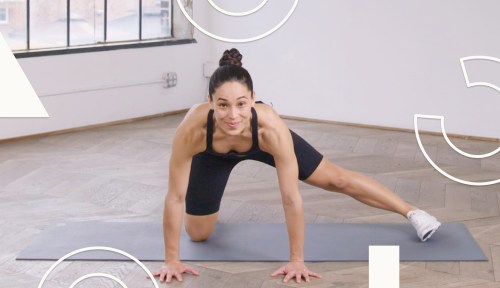The lower back is like the Grand Central Station of your body. It takes on the weight of your torso and arms, and anchors your hips, glutes, and hamstrings, allowing you to both lift things and move about the world.
Experts in This Article
fitness trainer and founder of Le Sweat
But that means it can also be a hotspot for pain if not everything is working in shipshape order.
When we talk about the low back, we’re referring to muscles surrounding bottom section of the spinal column. But, just like in all the rest of your body, those muscles don’t work independently. Shoring up your lower back also means working on your core (front and back), glutes, hips, and hamstrings. And strength isn’t the only piece of the puzzle.
“Anything that affects how well these muscles function, like joint mobility, weakness, or injury, may play a role in how efficient the low back muscles work, too,” Leada Malek, DPT, CSCS, previously told Well+Good.
That means tight muscles in the legs or the back, or an immobile spine or hips could be contributing to low back pain. So, to both combat and prevent it, you want to train both mobility and strength.
This lower back–friendly HIIT workout from trainer Charlee Atkins, founder of Le Sweat, does just that. Atkins begins with a mobility warmup that includes moves—like knee circles on your hands and knees—that Atkins says she herself does before every workout. She adds in a side plank with a hip extension intended to “work the obliques in addition to challenging the hip mobility, which will make your lower back feel a lot more supported in all the exercises we’re doing today,” Atkins says.
Two sets of three exercises each done twice through follow the warmup. Throughout it all, she includes mobility elements alongside muscle strengthening. For example, leg lowers “build up hip mobility and core strength,” and a sumo squat with a lean also requires engaging your back muscles and mobilizing the spine to keep the shoulders in line with the hips.
In just 16 minutes, you’ll fit in a serious cardio workout that could also prevent pain down the road. That’s a win-win in our book.
Sign Up for Our Daily Newsletter
Get all the latest in wellness, trends, food, fitness, beauty, and more delivered right to your inbox.
Got it, you've been added to our email list.











